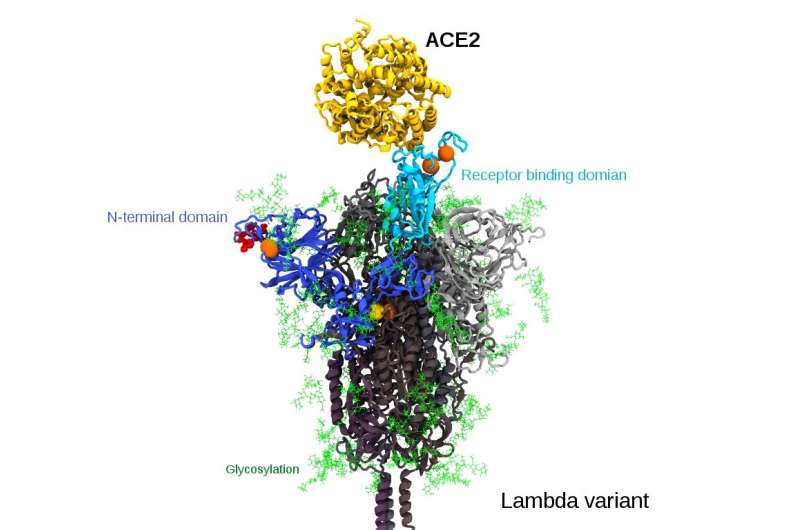A visualisation of the virus’ spike protein, showing the relative locations of the ‘three pairs’ of mutations. Image courtesy of Dr Michael Kuiper, Biomolecular modeller, CSIRO’s Data61. Credit: CSIRO
The Lambda variant has been reported in Australia. Dr. Seshadri Vasan, CSIRO scientist and COVID-19 project leader, has been studying the evolution of SARS-CoV-2 since its emergence.
Dr. Seshadri Vasan, CSIRO scientist and COVID-19 project leader, said:
"As of 7 July 2021, GISAID—the world's largest database of SARS-CoV-2 virus genome sequences—had a total of 2.22 million entries of which 2,235 constitute the Lambda variant.
"Of the 2,235 Lambda genome sequences on GISAID, three were isolated from cats in Peru and the remaining 2,232 from humans. The variant has spread to 29 countries including Australia, which recorded the Lambda variant on 3 April 2021, isolated from a 28-year-old male in Sydney.
"Many of the affected locations are in South America, predominantly Peru, although the first sample collection appears to be from Argentina on 8 November 2020.
"The Lambda variant has an eclectic set of mutations, many of which appear to be immune evasions—that is, allowing the virus to evade a person's immune response. Six of the key mutations in the virus' spike protein appear as three 'pairs' of substitution mutations in close proximity.
"Outside the spike, one of the changes (the 106-108 deletion in 'nsp6') is common to the Alpha, Beta and Gamma variants of concern. Interestingly, the L452Q substitution is a moderately radical change, and we encounter something similar (the L452R substitution) in both the Delta variant of concern and the Epsilon variant of interest.
"At this stage, the Lambda variant is definitely of structural interest, but will require further epidemiological evidence and peer-reviewed studies on infectivity and impact on vaccines to determine if it is a variant of concern."
Provided by CSIRO
























